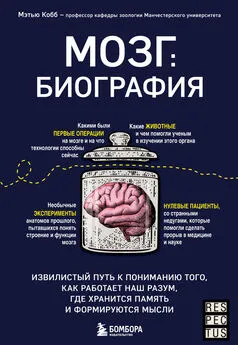Барбара Тверски - Ум в движении [Как действие формирует мысль] [litres]
- Название:Ум в движении [Как действие формирует мысль] [litres]
- Автор:
- Жанр:
- Издательство:Литагент Альпина
- Год:2020
- Город:Москва
- ISBN:978-5-0013-9354-2
- Рейтинг:
- Избранное:Добавить в избранное
-
Отзывы:
-
Ваша оценка:
Барбара Тверски - Ум в движении [Как действие формирует мысль] [litres] краткое содержание
Книга известного когнитивного психолога Барбары Тверски посвящена пространственному мышлению. Это мышление включает в себя конструирование «в голове» и работу с образами в отношении не только физического пространства, но и других его видов – пространств социального взаимодействия и коммуникации, жестов, речи, рисунков, схем и карт, абстрактных построений и бесконечного поля креативности. Ключевая идея книги как раз и состоит в том, что пространственное мышление является базовым, оно лежит в основе всех сфер нашей деятельности и всех ситуаций, в которые мы вовлекаемся.
Доступное и насыщенное юмором изложение серьезного, для многих абсолютно нового материала, а также прекрасные иллюстрации привлекут внимание самых взыскательных читателей. Они найдут в книге как увлекательную конкретную информацию о работе и развитии пространственного мышления, так и важные обобщения высокого уровня, воплощенные в девять законов когниции.
Ум в движении [Как действие формирует мысль] [litres] - читать онлайн бесплатно ознакомительный отрывок
Интервал:
Закладка:
Iverson, J. M., & Goldin-Meadow, S. (2001). The resilience of gesture in talk: Gesture in blind speakers and listeners. Developmental Science , 4(4), 416–422.
Почему мы жестикулируем?
Cartmill, E. A., Goldin-Meadow, S., & Beilock, S. L. (2012). A word in the hand: Human gesture links representations to actions. Philosophical Transactions of the Royal Society , 367(1585), 129–143.
Goldin-Meadow, S., & Alibali, M. W. (2013). Gesture’s role in speaking, learning, and creating language. Annual Review of Psychology , 64, 257.
Hostetter, A. B., & Alibali, M. W. (2008). Visible embodiment: Gestures as simulated action. Psychonomic Bulletin & Review , 15(3), 495–514.
Типы жестов
Goldin-Meadow, S. (2005). Hearing gesture: How our hands help us think . Cambridge, MA: Harvard University Press.
Kendon, A. (2004). Gesture: Visible action as utterance . Cambridge, England: Cambridge University Press.
McNeill, D. (1992). Hand and mind: What gestures reveal about thought . Chicago, IL: University of Chicago Press.
McNeill, D. (2006). Gesture: A psycholinguistic approach. In K. Brown (Ed.), The encyclopedia of language and linguistics (2nd ed., pp. 58–66). New York, NY: Elsevier Science.
Дейксис
Fillmore, C. J. (1982). Towards a descriptive framework for spatial deixis. In R. J. Jarvella & W. Klein (Eds.), Speech, place and action: Studies in deixis and related topics (pp. 31–59). London, England: Wiley.
Изображение как форма коммуникации
Clark, H. H. (2016). Depicting as a method of communication. Psychological Review , 123(3), 324–347.
Метафоры
Lakoff, G., & Johnson, M. (2008). Metaphors we live by . Chicago, IL: University of Chicago Press.
Жесты при объяснении часто предшествуют словам в процессе развития
Alibali, M.W., & Goldin-Meadow, S. (1993). Gesture-speech mismatch and mechanisms of learning: What the hands reveal about a child’s state of mind. Cognitive Psychology , 25, 468–523.
Goldin-Meadow, S., Alibali, M. W., & Church, R. B. (1993). Transitions in concept acquisition: Using the hand to read the mind. Psychological Review , 100(2), 279.
Жесты сообщают учителям о готовности учиться
Goldin-Meadow, S., & Sandhofer, C. M. (1999). Gesture conveys substantive information about a child’s thoughts to ordinary listeners. Developmental. Science , 2, 67–74.
Goldin-Meadow, S., & Singer, M. A. (2003). From children’s hands to adults’ ears: Gesture’s role in the learning process. Developmental Psychology , 39, 509–520.
Жесты сообщают о стратегиях, не передаваемых в речи
Broaders, S. C., Cook, S. W., Mitchell, Z., & Goldin-Meadow, S. (2007). Making children gesture brings out implicit knowledge and leads to learning. Journal of Experimental Psychology: General , 136, 539–550.
Эмоция
LeDoux, J. (1998). The emotional brain: The mysterious underpinnings of emotional life . New York, NY: Simon & Schuster.
Lewis, M., Haviland-Jones, J. M., & Barrett, L. F. (Eds.). (2010). Handbook of emotions . New York, NY: Guilford Press.
Oatley, K., Keltner, D., & Jenkins, J. M. (2006). Understanding emotions . Hoboken, NJ: Blackwell Publishing.
Отзеркаливание эмоций
Gallese, V., Keysers, C., & Rizzolatti, G. (2004). A unifying view of the basis of social cognition. Trends in Cognitive Science , 8(9), 396–403.
Использование пространства для описания пространства
Emmorey, K., Tversky, B., & Taylor, H. A. (2000). Using space to describe space: Perspective in speech, sign, and gesture. Spatial Cognition and Computation , 2(3), 157–180.
Использование пространства для упорядочивания времени
Bender, A., & Beller, S. (2014) Mapping spatial frames of reference onto time: A review of theoretical accounts and empirical findings. Cognition , 132, 342–382.
Boroditsky, L., Fuhrman, O., & McCormick, K. (2011). Do English and Mandarin speakers think about time differently? Cognition , 118(1), 123–129.
Marghetis, T., & Núñez, R. (2013). The motion behind the symbols: A vital role for dynamism in the conceptualization of limits and continuity in expert mathematics. Topics in Cognitive Science , 5(2), 299–316.
Núñez, R., & Cooperrider, K. (2013). The tangle of space and time in human cognition. Trends in Cognitive Sciences , 17(5), 220–229.
Tversky, B., Kugelmass, S., & Winter, A. (1991). Cross-cultural and developmental trends in graphic productions. Cognitive Psychology , 23(4), 515–557.
Жесты помогают объяснить действие и причинность
Engle, R. A. (1998). Not channels but composite signals: Speech, gesture, diagrams and object demonstrations are integrated in multimodal explanations. In Proceedings of the Twentieth Annual Conference of the Cognitive Science Society (pp. 321–326). New York, NY: Psychology Press.
Kang, S., Tversky, B., & Black, J. B. (2015). Coordinating gesture, word, and diagram: Explanations for experts and novices. Spatial Cognition & Computation , 15(1), 1–26.
Сидение на руках затрудняет речь
Krauss, R. M. (1998). Why do we gesture when we speak? Current Directions in Psychological Science , 7(2), 54–60.
Krauss, R. M., Chen, Y., & Gottesman, R. F. (2000). Lexical gestures and lexical access: A process model. Language and Gesture , 2, 261.
Жестикуляция способствует мышлению
Carlson, R. A., Avraamides, M. N., Cary, M., & Strasberg, S. (2007). What do the hands externalize in simple arithmetic? Journal of Experimental Psychology: Learning, Memory, and Cognition , 33(4), 747.
Chu, M., & Kita, S. (2008). Spontaneous gestures during mental rotation tasks: Insights into the microdevelopment of the motor strategy. Journal of Experimental Psychology: General , 137(4), 706.
Schwartz, D. L. (1999). Physical imagery: Kinematic versus dynamic models. Cognitive Psychology , 38(3), 433–464.
Schwartz, D. L., & Black, J. B. (1996). Shuttling between depictive models and abstract rules: Induction and fallback. Cognitive Science , 20(4), 457–497.
Жестикуляция для себя помогает решать пространственные задачи
Jamalian, A., Giardino, V., & Tversky, B. (2013). Gestures for thinking. Proceedings of the Annual Meeting of the Cognitive Science Society , 35. Взято с сайта https://escholarship.org/uc/item/0zk7z5h9.
Tversky, B., & Kessell, A. (2014). Thinking in action. Pragmatics & Cognition , 22(2), 206–223.
Жестикуляция снижает когнитивную нагрузку
Cook, S.W., Yip, T., & Goldin-Meadow, S. (2012). Gestures, but not meaningless movements, lighten working memory load when explaining math. Language and Cognitive Processing , 27, 594–610.
Goldin-Meadow, S., Nusbaum, H., Kelly, S. D., & Wagner, S. M. (2001). Explaining math: Gesturing lightens the load. Psychological Science , 12, 516–522.
Ping, R., & Goldin-Meadow, S. (2010). Gesturing saves cognitive resources when talking about nonpresent objects. Cognitive Science , 34, 602–619.
Жестикуляция помогает решать задачи на механику
Schwartz, D. L., & Black, J. B. (1996). Shuttling between depictive models and abstract rules: Induction and fallback. Cognitive Science , 20(4), 457–497.
Жесты лучше изображений способствуют решению задач на динамику
Schwartz, D. L. (1999). Physical imagery: Kinematic versus dynamic models. Cognitive Psychology , 38(3), 433–464.
Жесты способствуют мысленному вращению
Chu, M., & Kita, S. (2008). Spontaneous gestures during mental rotation tasks: Insights into the microdevelopment of the motor strategy. Journal of Experimental Psychology: General , 137(4), 706.
Wexler, M., Kosslyn, S. M., & Berthoz, A. (1998). Motor processes in mental rotation. Cognition , 68(1), 77–94.
Жестикуляция для себя помогает понимать и запоминать устройство сложных систем
Liu, Y., Bradley, M., & Tversky, B. (2018). Gestures for self help learning complex systems. Proceedings of Embodied and Situated Language Processing .
Жестикуляция для себя облегчает (или затрудняет) решение пространственных задач
Tversky, B., & Kessell, A. (2014). Thinking in action. Pragmatics & Cognition , 22(2), 206–223.
Заученные жесты помогают осваивать математику
Goldin-Meadow, S., Cook, S. W., & Mitchell, Z. A. (2009). Gesturing gives children new ideas about math. Psychological Science , 20, 267–272. doi:10.1111/j.1467–9280.2009.02297.x.
Согласованные жесты при пользовании тачпадом помогают решать математические задачи
Segal, A., Tversky, B., & Black, J. (2014). Conceptually congruent actions can promote thought. Journal of Applied Research in Memory and Cognition , 3(3), 124–130.
Жесты помогают младенцам
Acredolo, L. P., & Goodwyn, S. W. (2002 ). Baby signs: How to talk with your baby before your baby can talk . New York, NY: McGraw-Hill.
Жесты помогают детям освоить понятия множества и мощности множества
Alibali, M. W., & DiRusso, A. A. (1999). The function of gesture in learning to count: More than keeping track. Cognitive Development , 14(1), 37–56.
Gelman, R., & Gallistel, C. R. (1986). The child’s understanding of number . Cambridge, MA: Harvard University Press.
Jamalian, A. (2014). Grouping gestures promote children’s effective counting strategies by adding a layer of meaning through action (unpublished doctoral dissertation). Columbia University, New York, NY.
Люди жестикулируют для других более размашисто, чем для себя
Bavelas, J. B., Chovil, N., Coates, L., & Roe, L. (1995). Gestures specialized for dialogue. Personality and Social Psychology Bulletin , 21(4), 394–405.
Goldin-Meadow, S. (2005). Hearing gesture: How our hands help us think . Cambridge, MA: Harvard University Press.
McNeill, D. (1992). Hand and mind: What gestures reveal about thought . Chicago, IL: University of Chicago Press.
Читать дальшеИнтервал:
Закладка:
![Обложка книги Барбара Тверски - Ум в движении [Как действие формирует мысль] [litres]](/books/1063976/barbara-tverski-um-v-dvizhenii-kak-dejstvie-formir.webp)
![Барбара Морриган - Сердце, что растопит океан [litres]](/books/1059584/barbara-morrigan-serdce-chto-rastopit-okean-litre.webp)
![Рольф Добелли - Искусство ясно мыслить [litres]](/books/1067492/rolf-dobelli-iskusstvo-yasno-myslit-litres.webp)
![Александр Кондрашов - Жизнь в движении [litres]](/books/1074016/aleksandr-kondrashov-zhizn-v-dvizhenii-litres.webp)
![Мартин Рис - Всего шесть чисел. Главные силы, формирующие Вселенную [litres]](/books/1082236/martin-ris-vsego-shest-chisel-glavnye-sily-formir.webp)
![Джон Гревилл Агард Покок - Момент Макиавелли: Политическая мысль Флоренции и атлантическая республиканская традиция [litres]](/books/1143945/dzhon-grevill-agard-pokok-moment-makiavelli-politi.webp)
![Кира Бег - Король моих мыслей [litres самиздат]](/books/1148970/kira-beg-korol-moih-myslej-litres-samizdat.webp)
![Ива Коде - Мы мыслим… [litres самиздат]](/books/1149538/iva-kode-my-myslim-litres-samizdat.webp)


